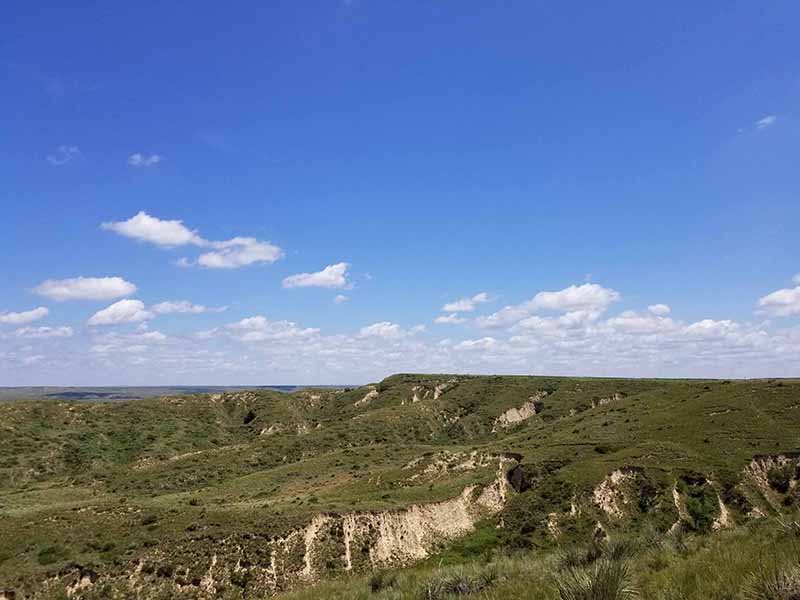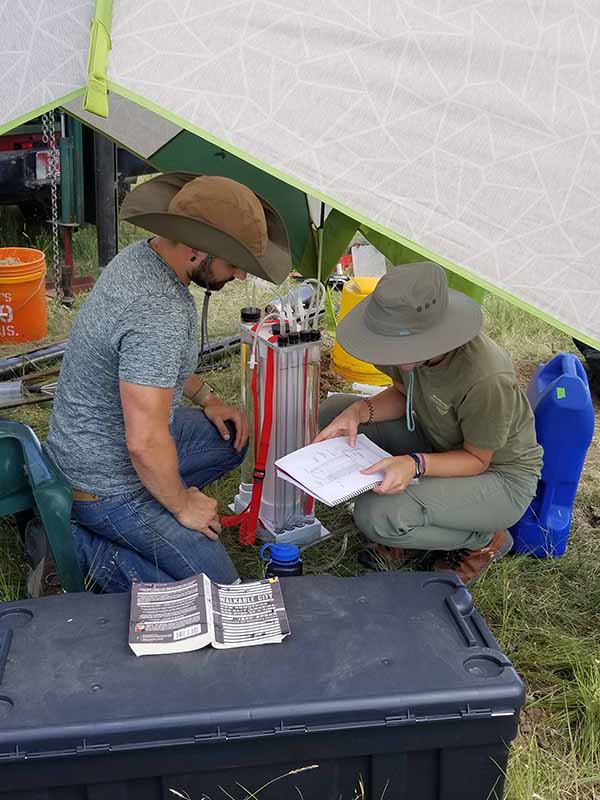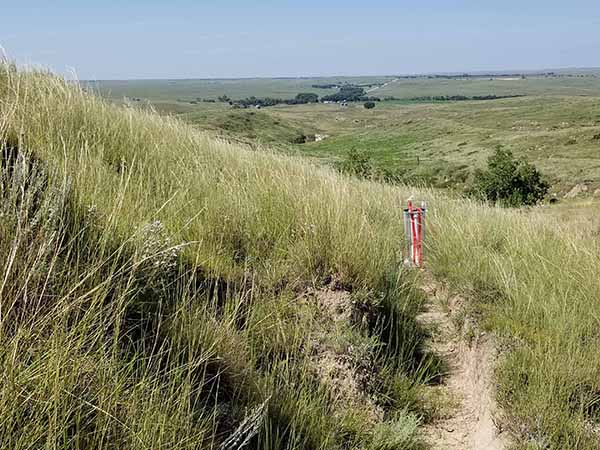Coevolution of Aeolian Landscapes and Soils

PI: Joe Mason, Co-PI: Erika Marín-Spiotta, Collaborator: Zhiwei Xu (Nanjing University), Graduate and Undergraduate Students: Taylor McDowell, Tien Vo, Chase Kasmerchak, and Emily Diaz Vallejo. Funding: National Science Foundation, Coevolution of Aeolian Landscapes and Soils, EAR-1920625, 2019-2021.
This project is focused on grass-stabilized sand dunes and loess landscapes (areas of thick wind-blown dust deposits) in the Great Plains, to determine how processes that shaped these landscapes in the past will influence their response to future climate change, especially more frequent severe drought or heavy rainfall. The results will be important for predicting patterns of future accelerated erosion and dune activation, with major practical implications, since the level tablelands of the loess landscapes are prime agricultural land and the dunes are important rangeland and key recharge areas for the Ogallala Aquifer.
The project is designed to test hypotheses on the interactions between geomorphic processes and soil formation in the evolution of loess tablelands and adjacent dune fields. The hypotheses propose that aeolian processes (deflation, slow loess accumulation, and dune activity) influence spatial patterns of soil formation and organic carbon accumulation, which in turn influence thresholds for wind and water erosion through effects on vegetation resilience and mechanical strength. Study sites are selected to allow comparison of soil and sediment properties related to nutrient and water availability and shear strength on tableland summits and adjacent slopes with varying soil development and recent loess accumulation, and on dunes with varying soil development. Field and lab measurements are combined with numerical modeling of soil hydrology (Hydrus 1D) and landscape evolution (LandLab 2.0), geospatial analyses, and luminescence dating.
Publication:
McDowell, T. M., Vo, T., Marín-Spiotta, E., Mason, J.A. 2022. Hydrology of a semiarid loess-paleosol sequence, and implications for buried soil connection to the modern climate, plant-available moisture, and loess tableland persistence. Journal of Geophysical Research-Earth Surface, 127: e2022JF006800. https://doi.org/10.1029/2022JF006800
Data from this project is here

